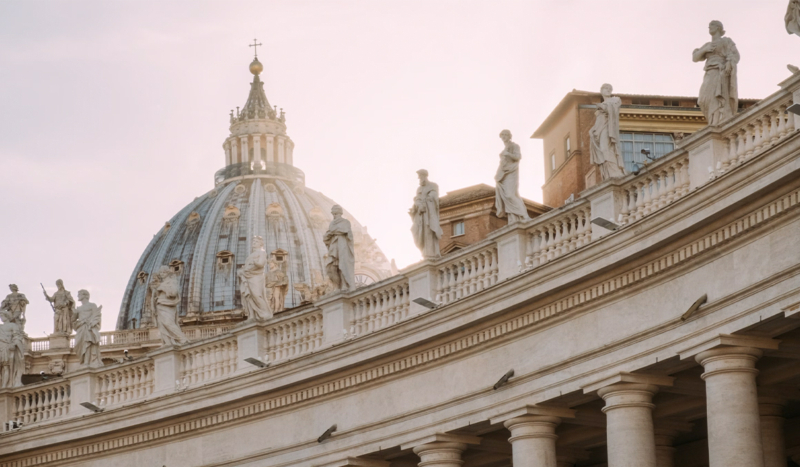
Simone Savoldi / Unsplash
CV NEWS FEED // An article in The Conversation explained the history and tradition behind Jubilee Years, linking the practice to the Jubilees in the Old Testament.
The article states that Jubilee years are based on the practice of observing the Sabbath. The books of Leviticus and Deuteronomy in the Bible both provide instructions for a “sabbatical year,” which was celebrated every seventh year.
“During that sabbatical, the texts call for forgiving debts and freeing enslaved people,” the article states. “Even the land is supposed to get rest, since farmers are told to let their fields lie fallow – a check against unfettered, and destructive, desires for productivity.”
Every 50 years, the Jewish people were instructed to celebrate a Jubilee Year, based on the sabbatical year but taking place after a “Sabbath of Sabbaths,” seven times seven years, the article explains.
Leviticus 25:10 gives instructions for the Jubilee year. “And you shall hallow the fiftieth year, and you shall proclaim liberty throughout the land to all its inhabitants. It shall be a Jubilee for you: you shall return, every one of you, to your property and every one of you to your family. That fiftieth year shall be a Jubilee for you: you shall not sow or reap the aftergrowth or harvest the unpruned vines. For it is a Jubilee; it shall be holy to you: you shall eat only what the field itself produces.”
GEORGE WEIGEL’S GUIDE TO FULLY ENGAGING IN THE JUBILEE YEAR
The first recordings of Catholic celebrations of Jubilee years come from the Middle Ages, the article continues. Pope Boniface VIII instituted a Jubilee in 1300, celebrating the 13th centennial of Our Lord’s birthday. Participants could earn a plenary indulgence, or a remission of the temporal punishment for sins, by going on a pilgrimage to Rome.
Though Pope Boniface VIII did not directly refer to biblical Jubilees in his decree, subsequent popes articulated the connection.
“The intervening time between Jubilees was reduced to 50 years to resonate with the ancient text,” the article explains. “Eventually, Jubilees came to be inaugurated every 25 years to increase the opportunity for participation.”
“As they developed, Jubilee celebrations kept their link to pilgrimages and reparation,” the article continued. “Both are meant to be reminders that human beings are made for the eternal, not merely the productive.”
The last Jubilee took place in 2000 under the papacy of Pope John Paul II, celebrating the 2,000th anniversary of Christ’s birth.
Pope Francis inaugurated the Jubilee Year of 2025 on Dec. 24, 2024, when he walked through the Holy Door of St. Peter’s Basilica.
VATICAN EXPLAINS HOW TO OBTAIN PLENARY INDULGENCES FOR JUBILEE YEAR 2025

